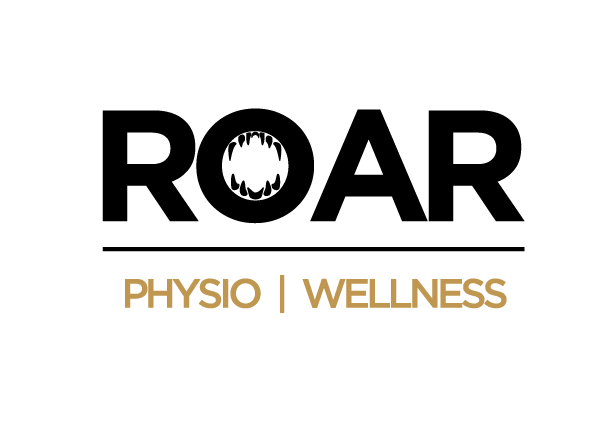Understanding Physiotherapy for Fibromyalgia
What is Fibromyalgia?
Fibromyalgia is a chronic condition characterized by widespread musculoskeletal pain, fatigue, and tenderness in localized areas. Individuals with fibromyalgia often experience symptoms such as sleep disturbances, cognitive difficulties, and heightened sensitivity to pain. The exact cause of fibromyalgia remains unknown, but it is believed to involve a combination of genetic, environmental, and psychological factors. Managing fibromyalgia can be challenging, but with the right treatment approach, individuals can find relief and improve their quality of life.
| Symptom | Description |
|---|---|
| Pain | Widespread musculoskeletal pain |
| Fatigue | Persistent tiredness and lack of energy |
| Sleep Disturbances | Difficulty falling or staying asleep |
| Cognitive Difficulties | Problems with memory and concentration |
| Tender Points | Increased sensitivity in specific areas of the body |
How Physiotherapy Can Help
Physiotherapy for fibromyalgia focuses on alleviating pain, improving mobility, and enhancing overall well-being. By using a combination of techniques, physiotherapists can help manage the symptoms of fibromyalgia effectively. Here are some ways physiotherapy can be beneficial:
- Pain Management: Physiotherapists employ various pain relief techniques such as heat therapy, cold therapy, and TENS (Transcutaneous Electrical Nerve Stimulation) to reduce pain and discomfort.
- Exercise Therapy: Tailored exercise programs can help strengthen muscles, improve flexibility, and increase endurance. Learn more about physiotherapy exercises designed for fibromyalgia.
- Manual Therapy: Techniques such as massage and joint mobilizations can help relax tight muscles, reduce stiffness, and improve range of motion.
- Education: Physiotherapists educate patients on self-management strategies, including posture correction, ergonomics, and relaxation techniques, to help them manage symptoms independently.
- Support and Guidance: Regular sessions with a physiotherapist provide ongoing support and adjustments to treatment plans based on progress and feedback.
Integrating physiotherapy into the treatment plan for fibromyalgia can lead to significant improvements in daily functioning and quality of life. If you’re considering physiotherapy, find a physiotherapy clinic near you for a personalized consultation. For more on how physiotherapy addresses specific issues, explore topics like physiotherapy for chronic pain and physiotherapy for arthritis.
Benefits of Physiotherapy
Physiotherapy offers a range of benefits for individuals suffering from fibromyalgia. By working with a physiotherapist, we can manage pain, improve mobility, and enhance our overall quality of life.
Pain Management Techniques
One of the primary benefits of physiotherapy for fibromyalgia is pain management. Physiotherapists employ various techniques to help us alleviate pain and discomfort. These methods can include:
- Therapeutic exercises: Tailored exercises to strengthen muscles and reduce pain.
- Manual therapy: Hands-on techniques to mobilize joints and soft tissues.
- Heat and cold therapy: Application of heat or cold to reduce pain and inflammation.
For more information on managing chronic pain through physiotherapy, check out our article on physiotherapy for chronic pain.
Improvement in Mobility and Flexibility
Fibromyalgia often leads to stiffness and limited range of motion. Physiotherapy can significantly improve our mobility and flexibility through specific exercises and stretches designed to target affected areas. By increasing our range of motion, we can perform daily activities with greater ease and comfort.
- Stretching exercises: Enhance flexibility and reduce muscle tightness.
- Strengthening exercises: Build muscle strength to support joints and improve functionality.
- Balance exercises: Improve stability and coordination.
| Exercise Type | Benefit |
|---|---|
| Stretching Exercises | Enhanced flexibility |
| Strengthening Exercises | Improved muscle support |
| Balance Exercises | Increased stability and coordination |
For specific exercises to improve mobility, refer to our guide on physiotherapy exercises.
Enhancing Overall Quality of Life
Physiotherapy not only addresses physical symptoms but also enhances our overall quality of life. By reducing pain and improving mobility, we can engage in activities that we enjoy and maintain a more active lifestyle. Physiotherapy also provides us with the tools and knowledge to manage our condition independently.
- Education: Learn self-management strategies to cope with symptoms.
- Support: Receive guidance and encouragement from our physiotherapist.
- Lifestyle modifications: Implement changes that promote long-term health and well-being.
For tips on integrating physiotherapy into daily life, see our section on long-term maintenance strategies.
By understanding the benefits of physiotherapy, we can take proactive steps towards managing fibromyalgia and improving our overall well-being. For those interested in exploring physiotherapy options, consider visiting a physiotherapy clinic near you.
Tailored Physiotherapy Approaches
When it comes to managing fibromyalgia, a tailored physiotherapy approach can make a significant difference. We will explore three key methodologies: exercise therapy, manual therapy, and education and self-management strategies.
Exercise Therapy
Exercise therapy is a cornerstone of physiotherapy for fibromyalgia. This approach focuses on low-impact aerobic activities, stretching, and strengthening exercises to improve physical function and reduce symptoms.
| Exercise Type | Frequency (per week) | Duration (minutes) |
|---|---|---|
| Aerobic Exercise | 3-5 | 20-30 |
| Stretching | Daily | 10-15 |
| Strengthening | 2-3 | 15-20 |
Exercise therapy helps reduce pain, improve sleep, and enhance overall quality of life. It’s important to start slowly and gradually increase intensity to avoid flare-ups. For more on exercise strategies, visit our article on physiotherapy exercises.
Manual Therapy
Manual therapy involves hands-on techniques to manipulate muscles, joints, and tissues. This approach can help alleviate pain, improve mobility, and reduce stiffness associated with fibromyalgia.
Techniques often used in manual therapy include:
- Massage: Relieves muscle tension and promotes relaxation.
- Joint Mobilization: Enhances joint function and reduces pain.
- Myofascial Release: Targets trigger points and knots in muscles.
Manual therapy should be performed by a skilled physiotherapist to ensure safety and effectiveness. For more information on related treatments, explore our article on physiotherapy for chronic pain.
Education and Self-Management Strategies
Education and self-management strategies empower individuals with fibromyalgia to take control of their symptoms and improve their quality of life. These strategies typically include:
- Understanding Fibromyalgia: Learning about the condition and its triggers.
- Pain Management Techniques: Implementing methods such as relaxation exercises and proper body mechanics.
- Lifestyle Modifications: Adopting healthy habits like regular exercise, balanced nutrition, and adequate sleep.
Education on self-management is crucial for long-term success in managing fibromyalgia. By understanding how to manage symptoms, individuals can lead a more active and fulfilling life. For additional tips, read our article on physiotherapy treatment.
By incorporating these tailored physiotherapy approaches, individuals with fibromyalgia can experience significant relief and improved well-being. Collaborating closely with a physiotherapist ensures that the treatment plan is customized to meet specific needs and goals. For more on finding the right physiotherapist, check out our guide on physiotherapy near me.
Collaborating with Your Physiotherapist
Successful physiotherapy for fibromyalgia involves a cooperative relationship between us and our physiotherapist. This collaboration is key to achieving the best outcomes.
Initial Assessment and Goal Setting
The first step in our journey with physiotherapy for fibromyalgia is an initial assessment. During this session, our physiotherapist will conduct a thorough evaluation to understand our specific symptoms, pain points, and overall health status. This assessment typically includes:
- Detailed medical history
- Physical examination
- Functional assessment
Based on this information, we will set realistic and achievable goals together. These goals might include reducing pain, improving mobility, or enhancing our overall quality of life.
| Assessment Component | Purpose |
|---|---|
| Medical History | Understand past health issues and treatments |
| Physical Examination | Identify pain points and physical limitations |
| Functional Assessment | Gauge daily activity levels and challenges |
Customized Treatment Plan
Following the initial assessment, our physiotherapist will design a customized treatment plan tailored to our unique needs and goals. This plan may include a combination of exercise therapy, manual therapy, and education on self-management strategies. The specific elements of our treatment plan might involve:
- Exercise Therapy: Tailored exercises aimed at improving strength, flexibility, and endurance. For more details, read about physiotherapy exercises.
- Manual Therapy: Hands-on techniques to relieve pain and enhance mobility.
- Education: Guidance on managing fibromyalgia symptoms and preventing flare-ups.
We can expect our treatment plan to be dynamic, adjusting as we progress and our needs change.
Monitoring Progress and Adjustments
Ongoing monitoring is a crucial aspect of physiotherapy for fibromyalgia. Regular follow-up sessions with our physiotherapist will help track our progress and make necessary adjustments to our treatment plan. This ensures that we continue to move toward our goals effectively.
| Monitoring Aspect | Frequency | Purpose |
|---|---|---|
| Progress Evaluation | Bi-weekly/Monthly | Assess improvement and setbacks |
| Treatment Adjustments | As needed | Modify exercises and techniques |
| Goal Reassessment | Quarterly | Ensure goals remain relevant and achievable |
By maintaining open communication with our physiotherapist and actively participating in our treatment plan, we can maximize the benefits of physiotherapy for fibromyalgia. For more information on different physiotherapy approaches, visit our articles on physiotherapy for chronic pain and physiotherapy treatment.
Integrating Physiotherapy into Daily Life
Integrating physiotherapy into our daily routines can significantly improve the management of fibromyalgia symptoms. By adopting home exercise programs, making lifestyle modifications, and developing long-term maintenance strategies, we can enhance our quality of life and maintain the benefits of physiotherapy.
Home Exercise Programs
Home exercise programs are a cornerstone of physiotherapy for fibromyalgia. These programs are designed to be simple yet effective, allowing us to continue our treatment outside the clinic. Regular exercise helps to maintain mobility, reduce pain, and improve overall well-being.
Typical home exercises might include:
- Stretching routines: To improve flexibility and reduce muscle stiffness.
- Strengthening exercises: To build muscle strength and support joints.
- Low-impact aerobic activities: Such as walking or cycling to enhance cardiovascular health.
| Exercise Type | Frequency | Duration |
|---|---|---|
| Stretching | Daily | 10-15 minutes |
| Strengthening | 3 times a week | 20-30 minutes |
| Aerobic | 3-5 times a week | 30 minutes |
For specific exercises, please refer to our guide on physiotherapy exercises.
Lifestyle Modifications
Adopting certain lifestyle changes can complement our physiotherapy treatment and further alleviate fibromyalgia symptoms. These modifications often focus on improving overall health and reducing stress.
Key lifestyle changes include:
- Healthy diet: Consuming a balanced diet rich in fruits, vegetables, lean proteins, and whole grains.
- Adequate sleep: Prioritizing sleep hygiene to ensure restful and restorative sleep.
- Stress management: Techniques such as mindfulness, meditation, and deep-breathing exercises to reduce stress levels.
Implementing these changes can help us manage fibromyalgia more effectively and enhance the benefits of our physiotherapy sessions.
Long-Term Maintenance Strategies
Long-term maintenance strategies are essential for sustaining the improvements achieved through physiotherapy. These strategies involve regular check-ins with our physiotherapist, ongoing exercise, and continuous lifestyle adjustments.
Components of a long-term maintenance plan may include:
- Regular follow-ups: Scheduling periodic visits with our physiotherapist to monitor progress and make necessary adjustments.
- Consistent exercise: Maintaining a regular exercise regimen to keep our muscles strong and flexible.
- Adaptation and flexibility: Being open to modifying our routines as our condition evolves.
Incorporating these strategies ensures that we continue to benefit from physiotherapy and manage our fibromyalgia effectively over time.
For more information on how physiotherapy can aid in various conditions, check out our articles on physiotherapy for back pain and physiotherapy for chronic pain.

